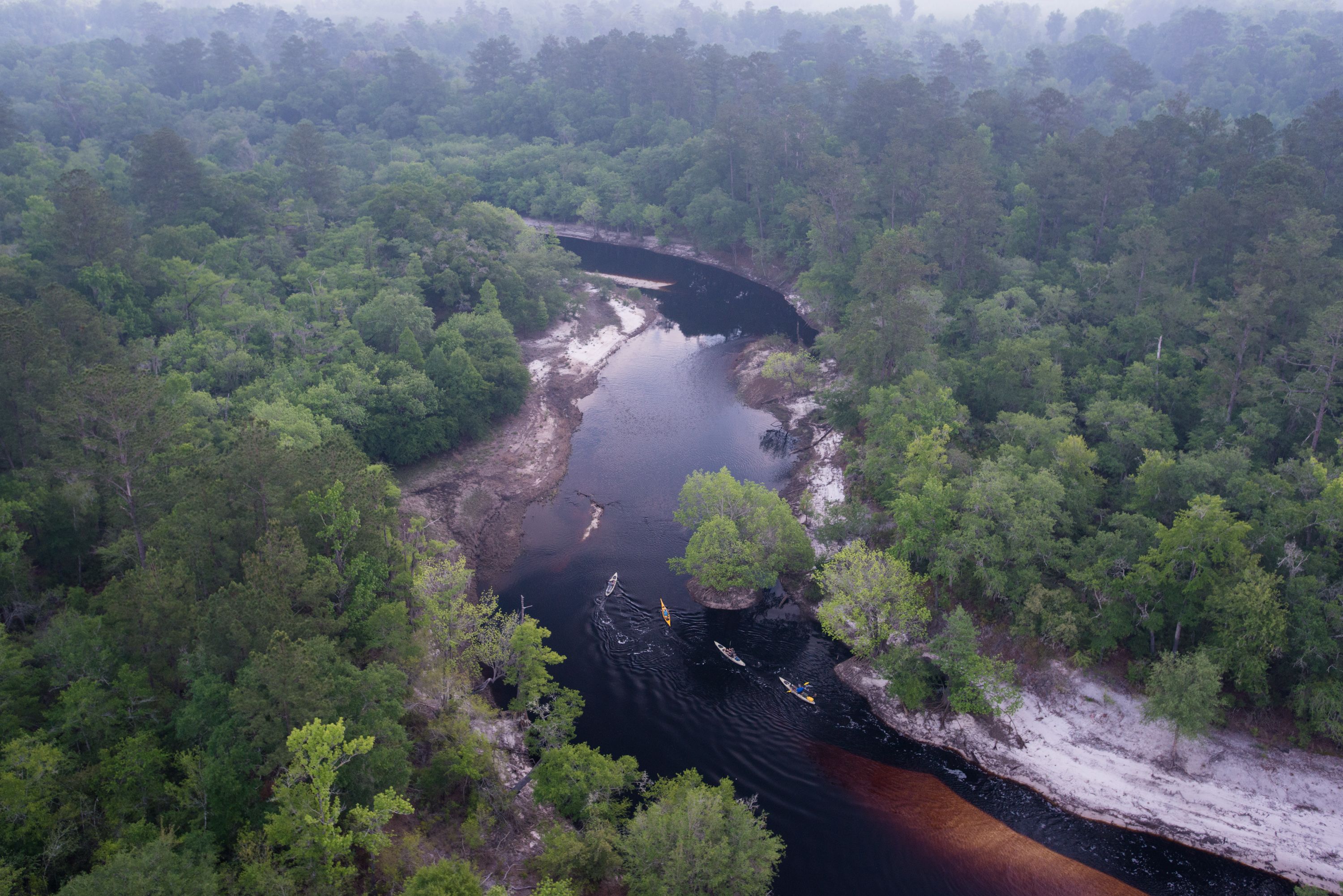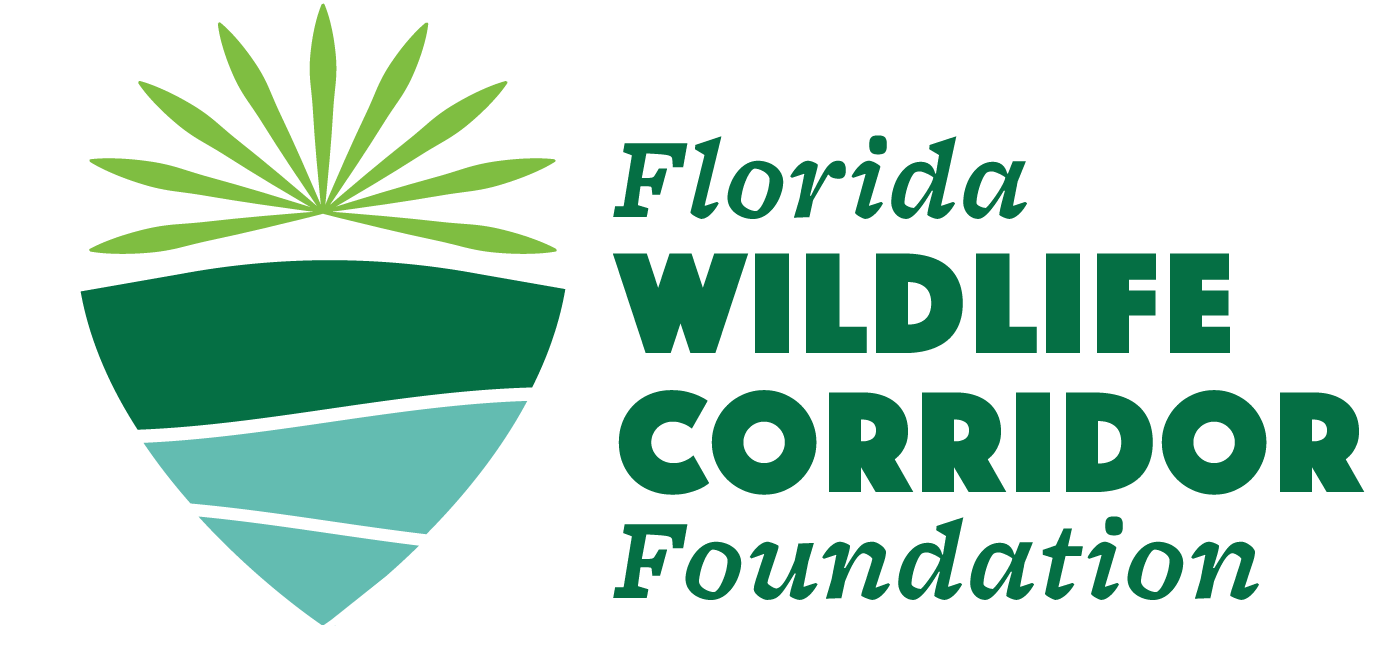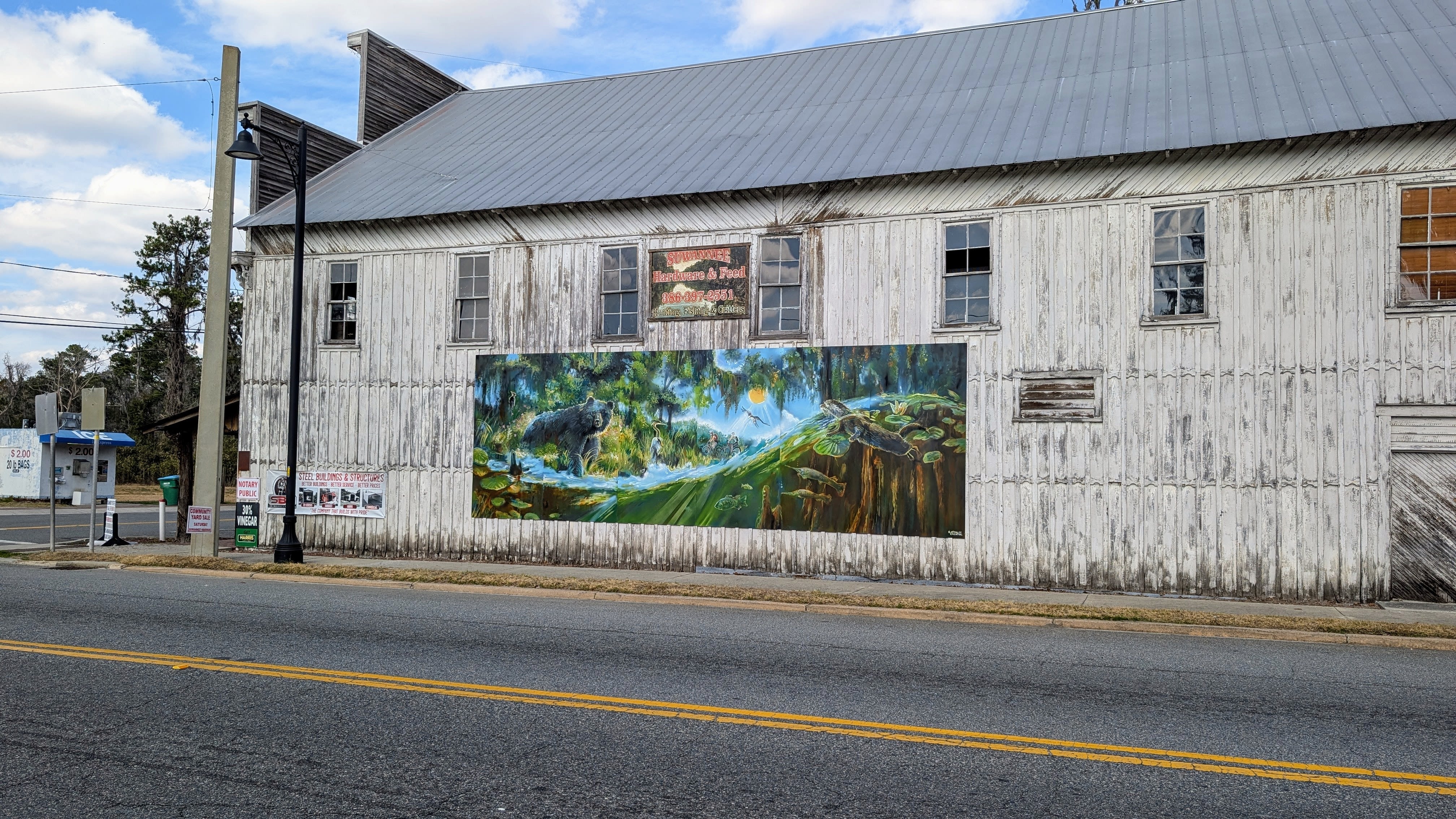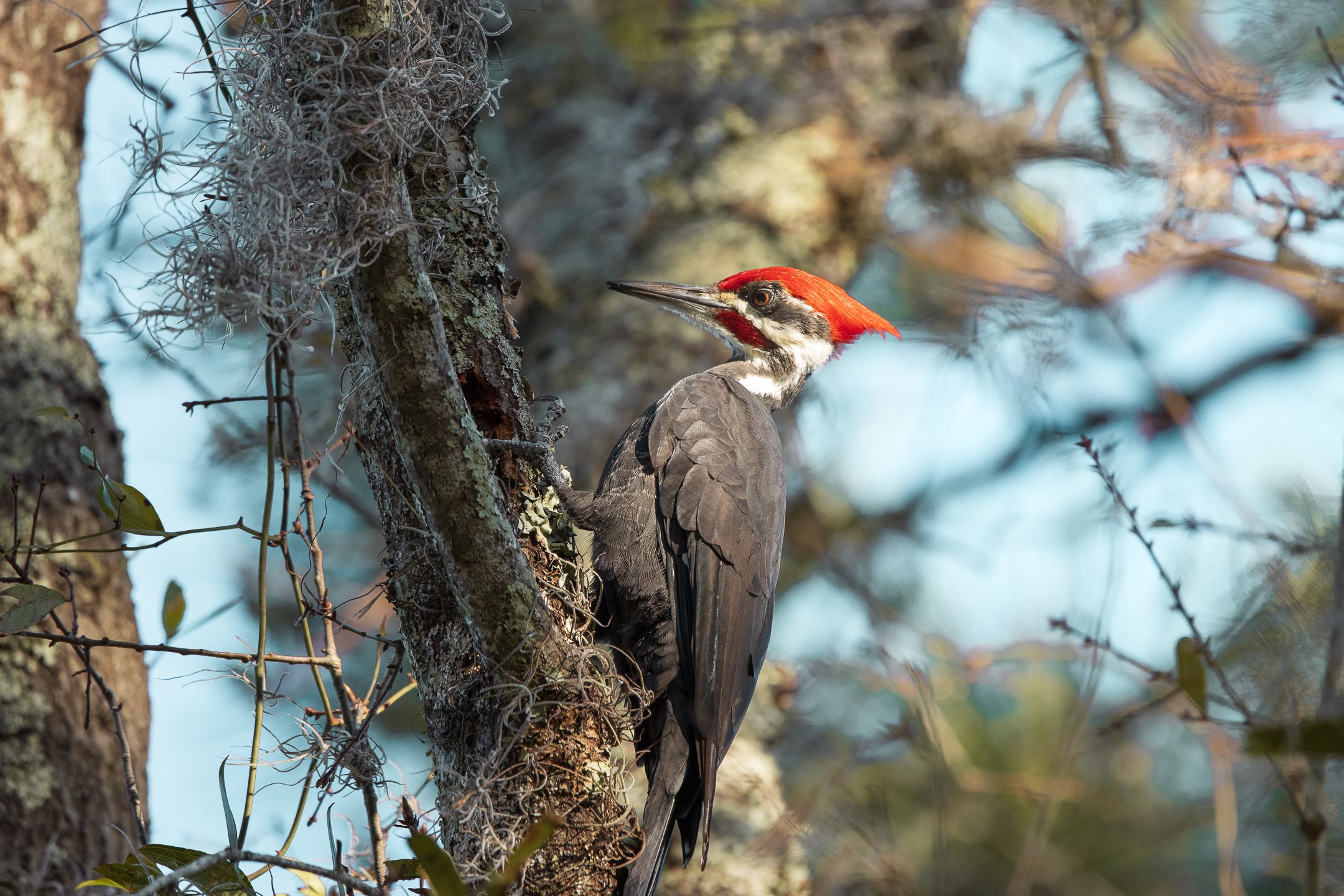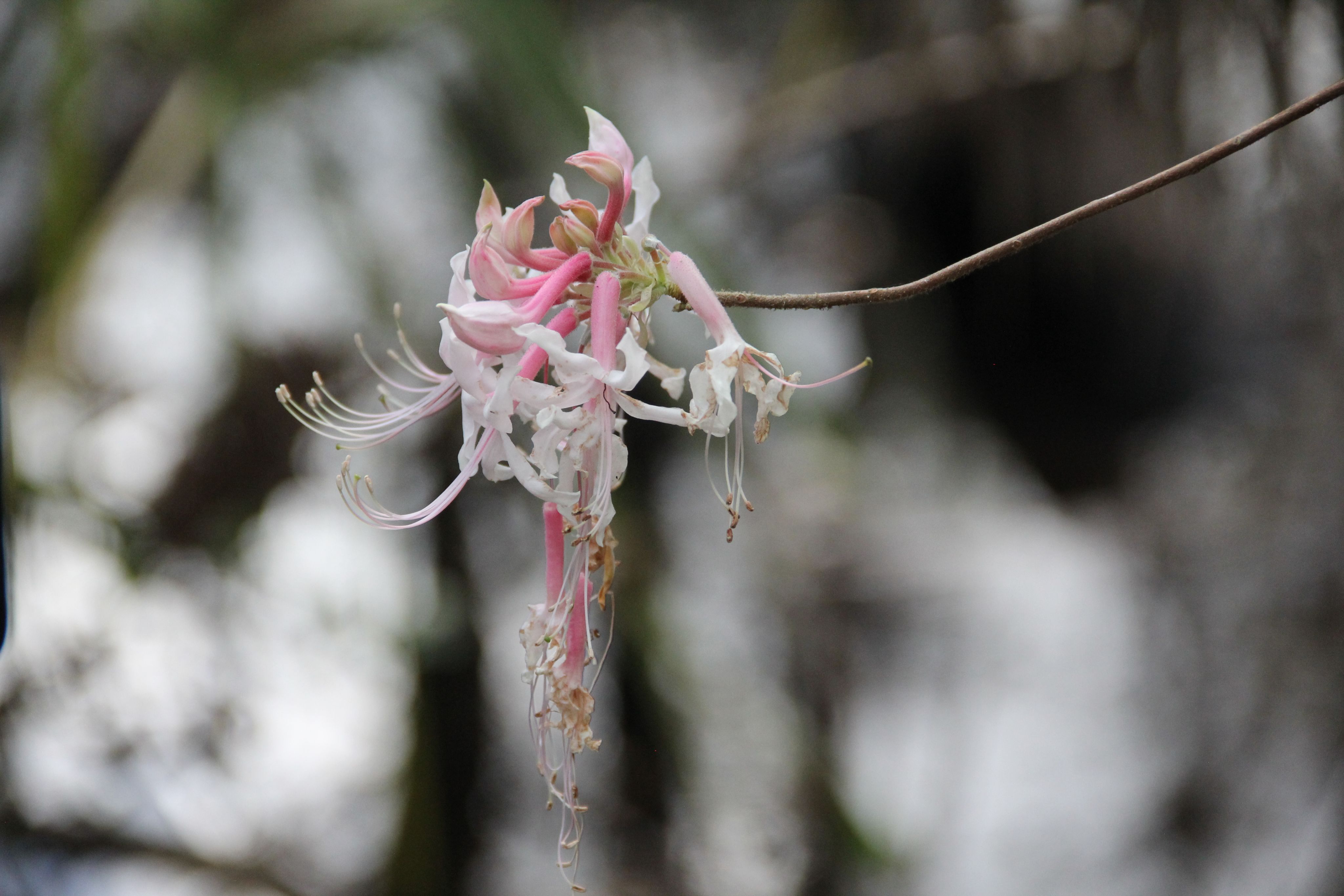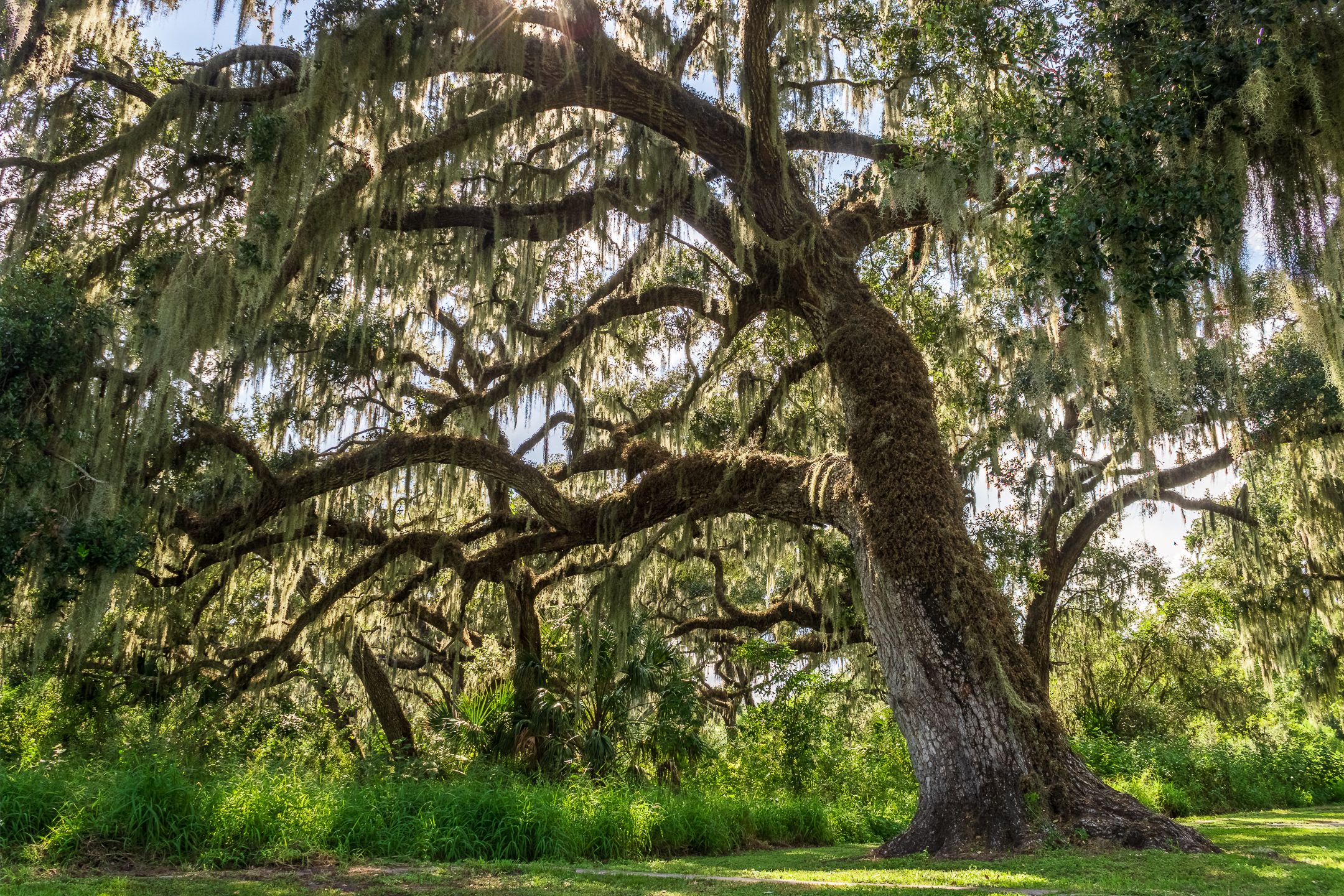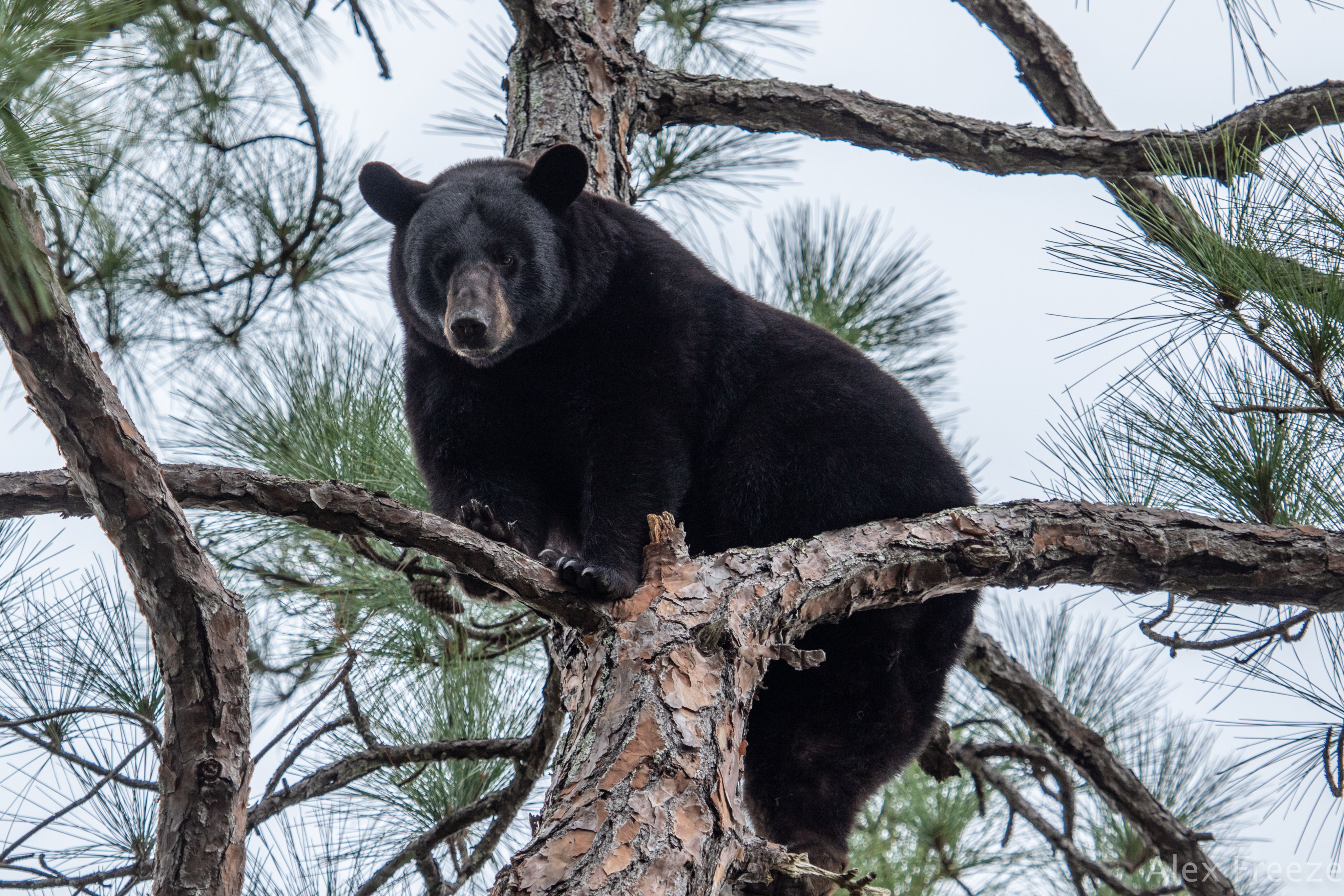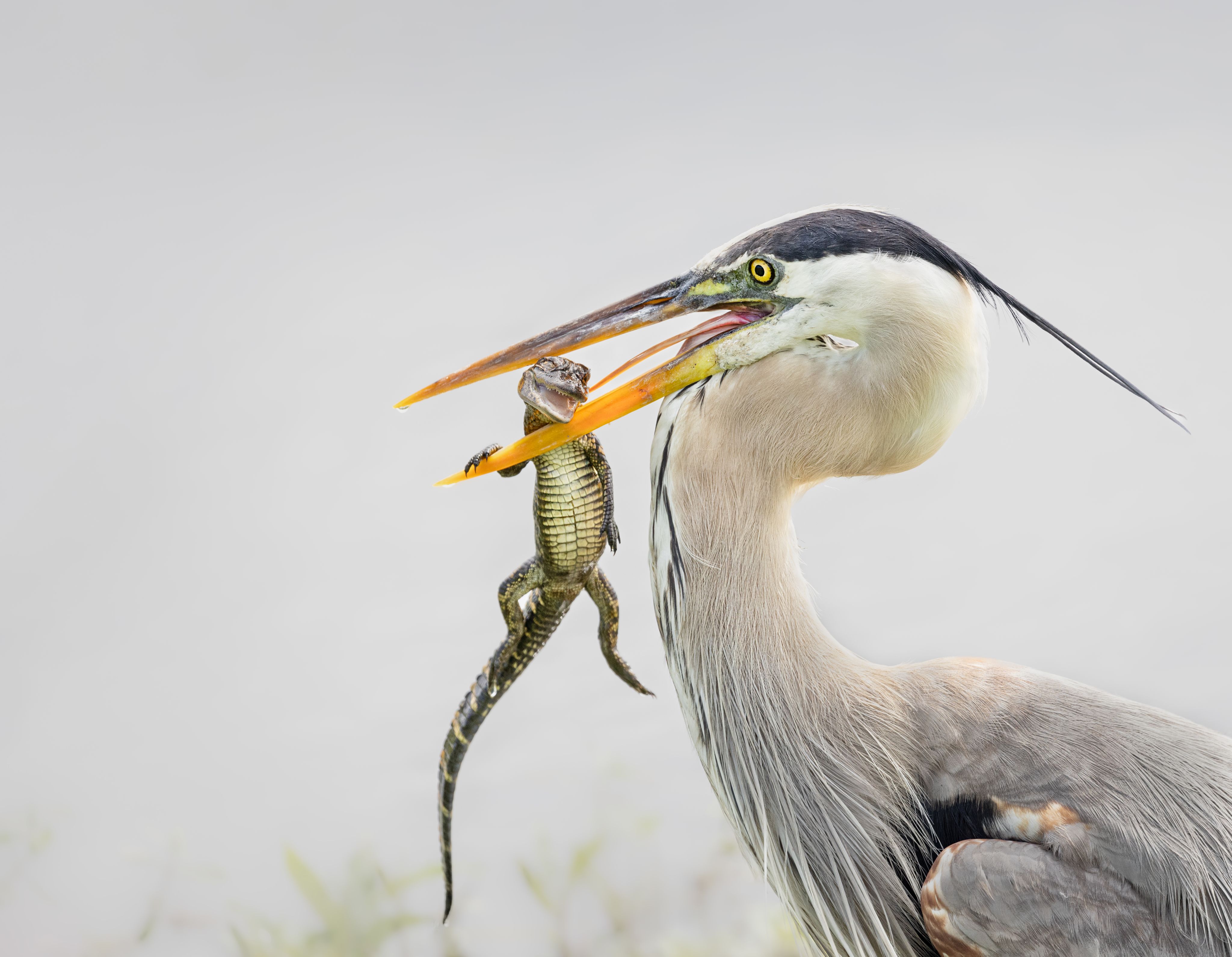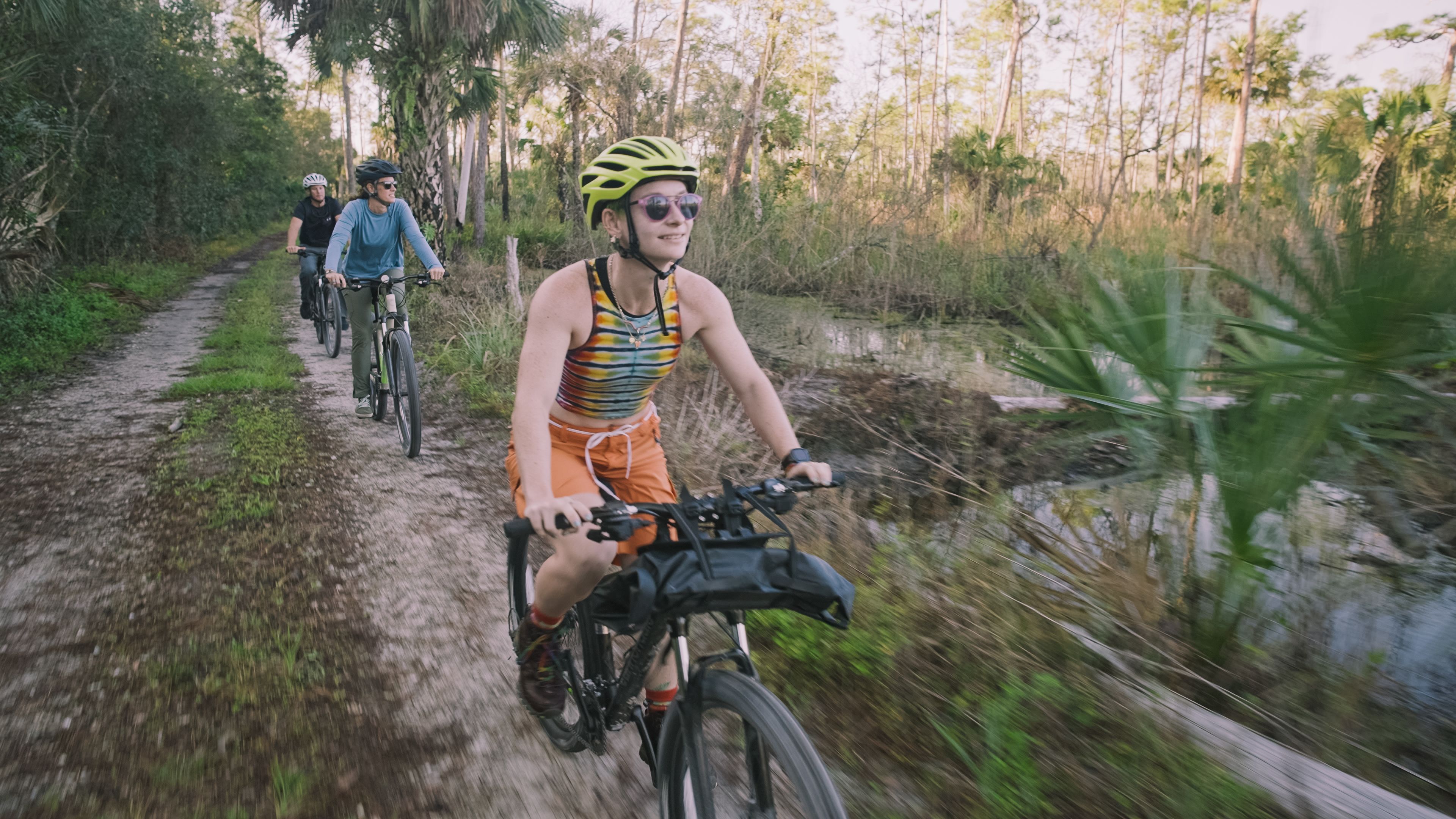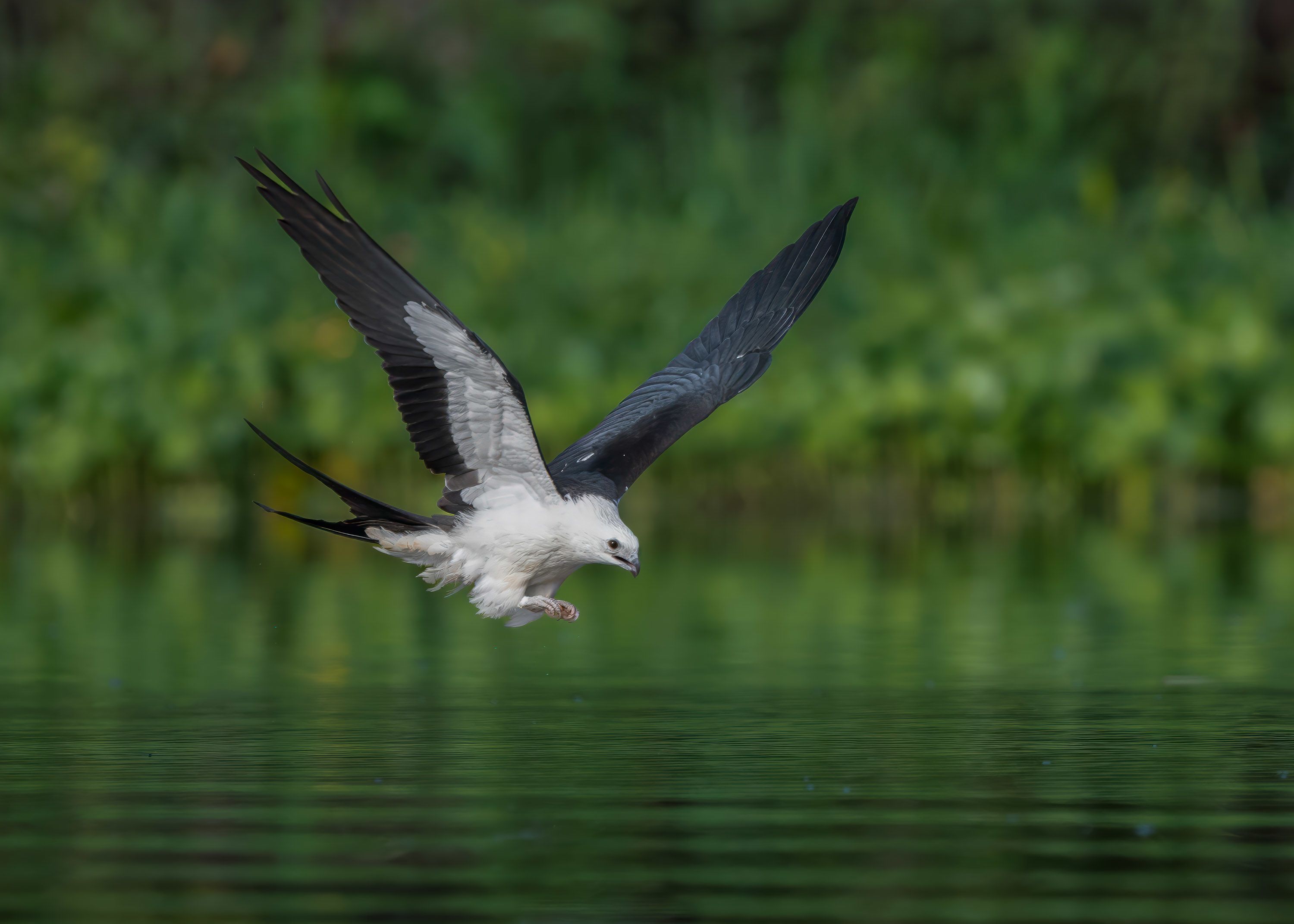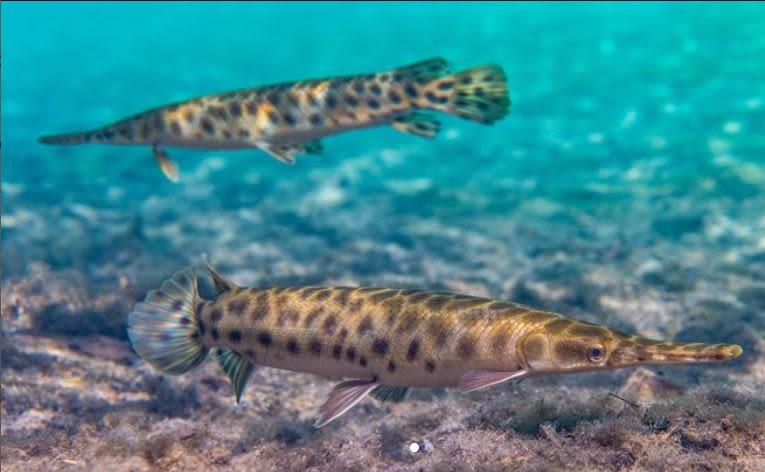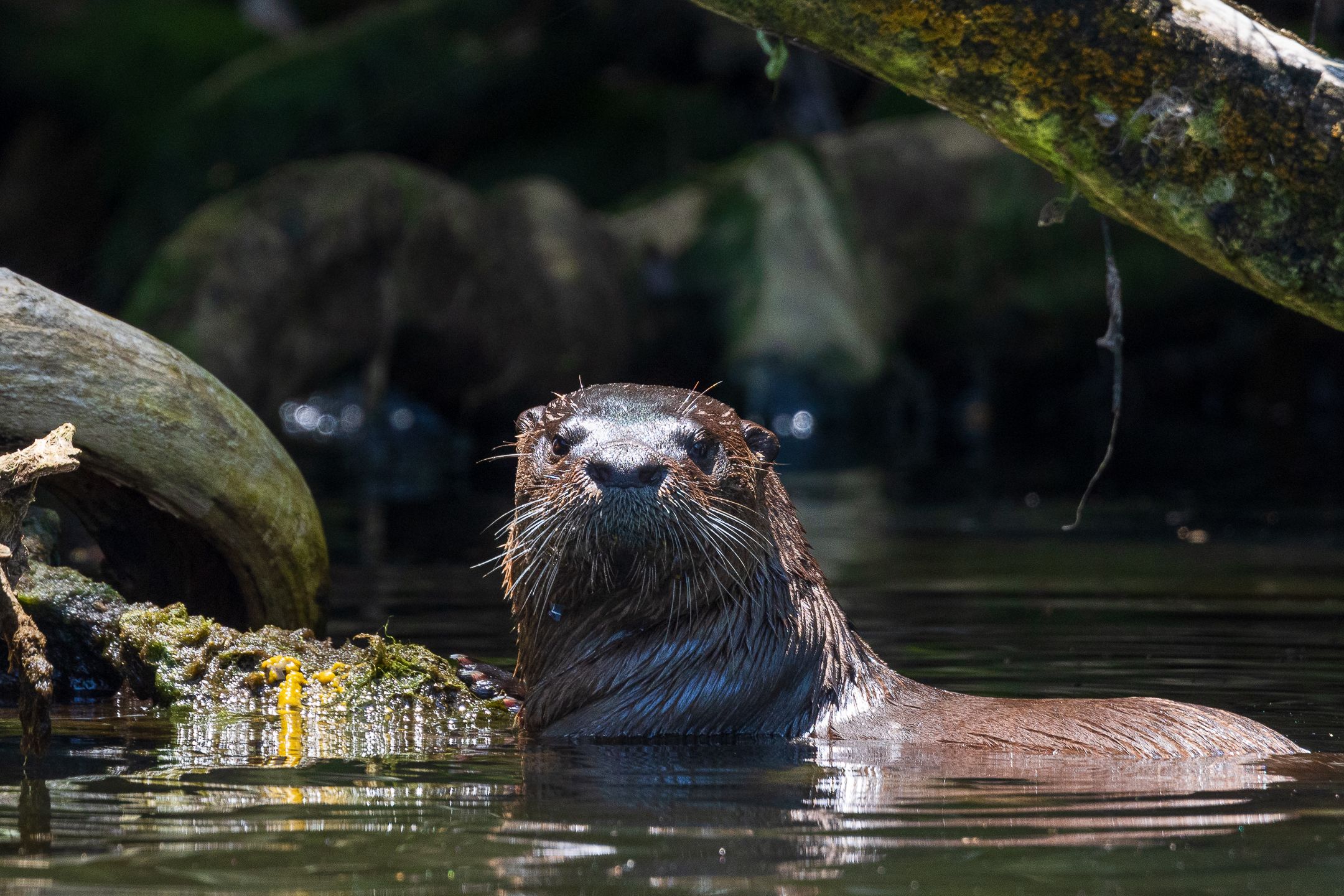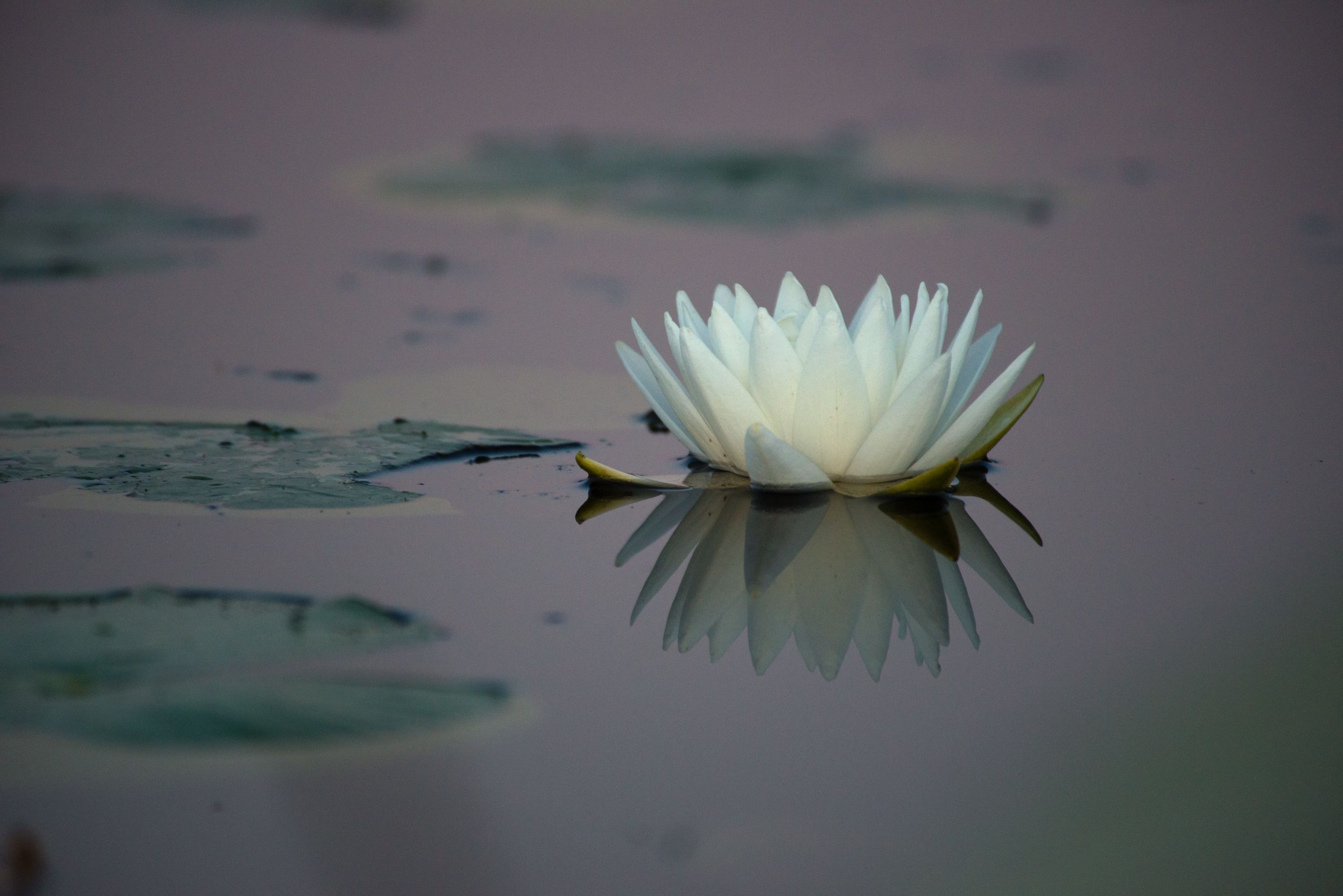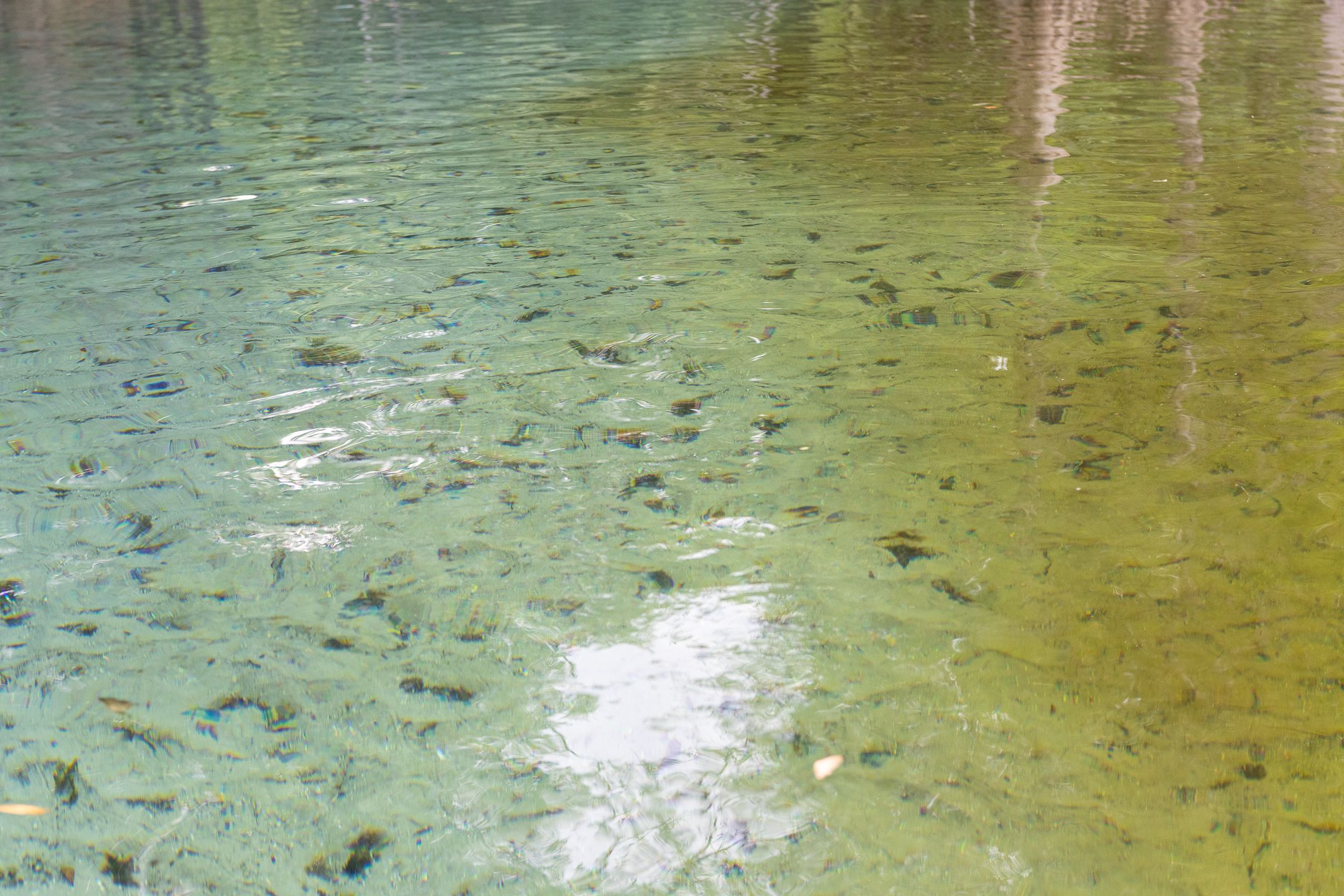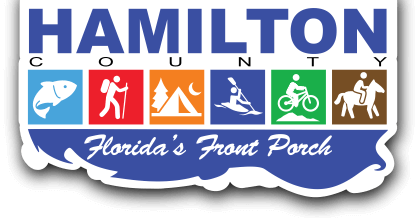Gateway to White Springs: A Natural Haven
By Muralist Christian Stanley
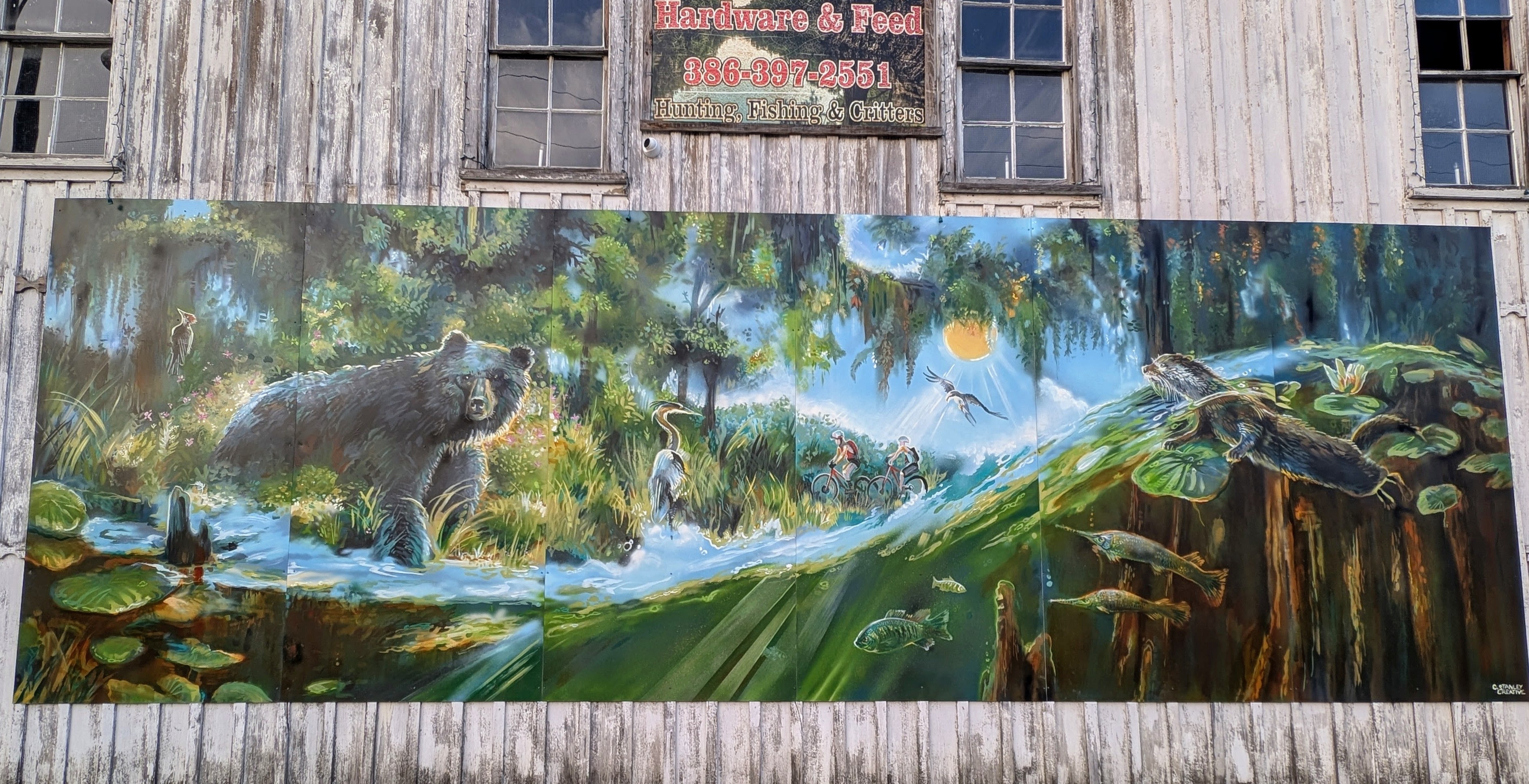
The Florida Wildlife Corridor is an 18-million-acre statewide network of connected lands and waters that supports wildlife and people.
Seen in dark green, 10 million acres are protected as federal lands, state parks and forests, county lands, water management district lands, or private lands under conservation easements.
The remaining 8 million acres in light green are unprotected opportunity areas for conservation and are mostly comprised of agricultural working lands, such as cattle ranches and timber land. Not only do these valuable spaces provide food and fiber for Florida and our nation, but they also provide interconnected landscapes that keep Florida’s wild spaces connected.
Our Mural Campaign is aimed at raising awareness of the importance of the Florida Wildlife Corridor in areas with the greatest ecological significance that have the highest risk of development by 2030.
The geography around White Springs is a vital link in the Florida Wildlife Corridor, with the Suwannee River serving as a natural connector. Originating in the Okefenokee Swamp National Wildlife Refuge, the Suwannee flows south past the Osceola National Forest, reaching Big Shoals State Park and State Forest near White Springs. To the east, Stephen Foster Folk Culture State Park, Suwannee River State Park, and Twin Rivers State Forest lines its banks. This Corridor of protected green space allows wildlife to travel along the Suwannee to either the panhandle, the big bend, or north into Georgia without running into many obstacles.
Hamilton County is home to important fauna like the Florida Black Bear and North American River Otter. The Florida National Scenic Trail also runs through the county, with White Springs being the first Florida Trail Gateway Community. Locals and visitors alike enjoy an abundance of recreational activities in Hamilton County such as kayaking, paddleboarding, biking, camping, horseback riding, and fishing.
The wild spaces around White Springs and Hamilton County are currently in danger because of rapid population growth. Without thoughtful conservation and planning the connected landscape will be lost, resulting in diminished wildlife populations, degraded water quality and negative impacts on the outdoor recreation and ecotourism important to the local economy.
Meet The Artist
Christian Stanley is a Central Florida based artist that has lived in the Orlando area since graduating from the University of Central Florida in 2011 with a degree in graphic design. Born and raised in Stuart, FL, Christian’s art is often influenced by his roots and love for the wildlife of the Southeast. From an early age Christian sought out natural settings for inspiration, and continues to enjoy hiking and wildlife spotting with his wife, Jessica.
The two met in 2017 and soon after formed C. Stanley Creative while painting a small electrical box as a part of a community art initiative. Since then Christian has gone on to paint dozens of murals a year with his largest project to date spanning over 8,000 square feet in size. He has taken his mural art talents across the United States and overseas to international street art festivals.
Christian’s street art work is known for its signature “dash and dot” style, which borders on impressionism to give his subjects depth and vibrant color. He has had the privilege of working with large national brands and local community arts organizations alike.
Christian and Jessica work full time in the arts, and are firm believers in the power of art to change places for the better. In their travels they had the opportunity to see the power of public art at work in communities of all shapes and sizes, and find their most rewarding work to be in towns that understand that art can be used as a tool for community revitalization.

"Gateway to White Springs: A Natural Haven" by Christian Stanley showcases the native flora and fauna of the Suwannee River that runs through White Springs and Hamilton County. This mural is one of three Florida Wildlife Corridor Murals in White Springs meant to highlight Hamilton County's role as a Corridor Gateway Community.
The Florida Fish and Wildlife Conservation Commission (FWC) manages fish and wildlife resources for their long-term well-being and the benefit of people. Thanks to their contributions, you can learn more about the species in this mural. Scroll to learn about each of the species featured.
Photo by Ethan Coyle
Photo by Ethan Coyle
Pileated Woodpecker
(Dryocopus pileatus)
The pileated woodpecker is a large woodpecker found throughout all of Florida, except the Keys. It typically lives in mature forests that have large dead trees for its nesting and feeding habits.
Pileated Woodpeckers are considered a keystone species for the unique rectangular cavities they leave in the wood when searching for carpenter ants and other insects. The nest holes these birds make offer crucial shelter to many species including songbirds, owls, ducks, and bats.
Photo by Avery Palmer
Photo by Avery Palmer
Wild Azalea
(Rhododendron canescens)
Wild azalea, also known as mountain azalea or sweet pinxter azalea is a deciduous flowering shrub. Its showy pinkish- to rose-colored flowers are trumpet-shaped with noticeably protruding stamens and pistils. They are borne around the same time that the first leaves appear and are particularly fragrant.
They bloom in spring and occurs naturally in pine flatwoods, mesic hammocks, bay swamps, and floodplain and slope forests. It attracts a number of pollinators, including hummingbirds.
Their native range includes the Panhandle and North Florida.
Photo by Ethan Coyle
Photo by Ethan Coyle
Southern Live Oak
(Quercus virginiana)
The live oak is one of those plants that is inseparable from Florida’s identity. Since live oaks live for hundreds of years, several generations get to enjoy each majestic, sprawling tree that is draped with moss. These trees provide many ecosystem services and habitat for many species. They are massive trees that can reach 60-80 feet tall and up to 60-120 feet wide when under the right conditions.
Live oaks possibly get their name because, unlike most other deciduous oaks which drop their leaves in the winter and might look dead, live oaks lose and replace their leaves gradually throughout the year and so look "live".
Unlike many other oak trees, live oaks have narrow, smooth-edged leaves. The edges of these shiny, thick, dark green leaves often curl under. The thick, waxy coating and curling help the tree conserve moisture during the long, hot summers.
Photo by Alex Freeze
Photo by Alex Freeze
Florida Black Bear
(Ursus americanus floridanus)
The Florida black bear is a subspecies of the American Black Bear which once ranged throughout Florida but now live in several distinct management areas across the state covering about 49% of their historic range. FWC biologists estimate that there are approximately 4,050 black bears in Florida.
Since the 1980s, the black bear population has been expanding along with our human population. Florida has grown from 5 million residents in 1960 to 20 million today and is projected to reach almost 36 million by 2060. Urban sprawl is encroaching on traditionally remote areas, bringing people into prime bear habitat. As a result, bears and people are encountering each other more than ever.
Photo by Robert Gloeckner
Photo by Robert Gloeckner
Great Blue Heron
(Ardea herodias)
The Great Blue Heron is a familiar sight to most Floridians. It is a permanent resident of wetlands throughout the state, often seen along ponds, lakes, and canals.
As its name suggests, the Great Blue Heron is our largest "dark" heron, although it is frequently mislabeled a "crane" by the public.
When foraging, Great Blue Herons exploit all types of wetlands and, occasionally, even upland habitats. They feed on a variety of prey, including fish, insects, crustaceans, amphibians, snakes, young birds, and rodents.
Humans
(Homo sapiens)
Humans play a vital role in the ecosystem and the Florida Wildlife Corridor through responsible recreation, sustainable land management, and the production of food and fiber. By enjoying outdoor activities like hiking, biking, paddling, and wildlife watching, people develop a deeper connection to nature and help support conservation efforts.
Landowners and managers steward working lands, ensuring that forests, ranches, and farms provide habitat for wildlife while sustaining livelihoods. Agriculture and forestry within the Corridor contribute to Florida’s economy and food security, demonstrating how people and nature can thrive together when landscapes are thoughtfully managed and preserved.
Photo by Alexander Wallace
Photo by Alexander Wallace
Swallow-tailed Kite
(Elanoides forficatus)
The sight of a swallow-tailed kite is unforgettable: a black-and-white bird of prey with a deeply forked tail soaring through the summer sky.
After spending the fall and winter in South America, kites arrive in Florida in early March to breed. They build nests of small sticks woven with Spanish moss, preferably in tall cypress and pine. These trees emerge from a canopy of prey-rich woodlands, like those of swamps and savannas. Highly social for a raptor, they nest in loose colonies and often forage in small flocks.
The kites eat all kinds of insects and small animals, including frogs, anoles, and snakes. By early July, they begin to gather in large communal roosts for the migration back to South America. The future of swallow-tailed kites depends on protection of lowland forests throughout their breeding range.
Suwannee Bass
(Micropterus notius)
Suwannee bass can be caught in the Ichetucknee, Santa Fe, St. Marks, Suwannee, Wacissa, and Wakulla rivers of Florida, as well as the Alapaha, Ochlockonee, and Withlacoochee rivers of Florida and Georgia. A riverine fish, Suwannee bass are often found in moderate to swift currents near limestone or woody structure.
A heavy-bodied black bass that seldom exceeds 12 inches long. Mature Suwannee bass have bright turquoise coloring on the cheeks, breast, and belly. The upper jaw does not extend beyond the eye, and there is only a shallow notch between the dorsal fins. A distinct dark blotch where the lateral line meets the caudal fin and scales on bases of dorsal, anal and caudal fins further identify Suwannee bass.
Photo by Thomas Waltzek
Photo by Thomas Waltzek
Florida Gar
(Lepisosteus platyrhincus)
Florida Gar are found in the Ochlockonee River and waters east and south in peninsular Florida where they inhabit streams, canals and lakes with mud or sand bottoms near underwater vegetation. These prehistoric fish have ganoid (bony) scales that have peg-and-socket joints forming a hard armor.
Photo by Ethan Coyle
Photo by Ethan Coyle
North American River Otter
(Lontra canadensis)
This water-loving animal is found throughout Florida except the Keys. River otters usually prefer fresh water and can be found in rivers, creeks, lakes, ponds, and swamps. Otters live in burrows on the bank of the water body, often under tree roots. They may dig their own burrow or remodel a beaver’s burrow.
The river otter is adapted for both land and water with short legs, webbed toes, and a strong, flattened tail. Otters have five toes and the heel pad tends to be somewhat horseshoe shaped. The ears appear large on its small flattened head. River otter fur ranges from light to dark, rich brown.
River otters are mostly nocturnal and feed on shellfish and fish. They are social animals, and groups usually consist of a female and her juvenile offspring.
Photo by Carlton Ward Jr.
Photo by Carlton Ward Jr.
American White Waterlily
(Nymphaea odorata)
This showy member of the water lily family (Nymphaeaceae) is a beautiful plant to admire as you paddle a canoe around a lake or down a sluggish stream. This plant is generally found in quiet water up to 5 or 6 feet deep and is adapted to its aquatic habitat.
The white water lily is recognized by its large, floating, circular leaves and large, white flowers. The waxy leaves are up to 8 inches across with a narrow v-shaped cleft where the stem attaches. The underside of the leaf is green or reddish-purple in color. The flower can be up to 5 inches wide with numerous white petals and is attached to a separate stem from the leaf. Forty or more yellow stamens surround a central ovary and disk-shaped stigma.
It usually flowers only from early morning until noon and is very fragrant.
Photo by Ethan Coyle
Photo by Ethan Coyle
Bald Cypress
(Taxodium distichum)
Bald Cypress trees tend to grow in forested wetlands, along streams and rivers, in spring runs and ponds, and in places with still or slow-moving water. Bald Cypresses are the most flood-tolerant of all Florida's trees, which is why they dominate swamps that have long flood periods. Bald Cypress swamps are home to many species, with large mammals and birds especially take advantage of the plant density and hollow trees of the swamps.
They are known for their pneumatophores (knees) which function to transport air to drowned roots underground and their buttressed (flared) trunks which both work together to keep the tree stable in its wet environment. Bald Cypress trees can grow up to 150 feet and reach six feet in diameter and have flat leaves that grow on both sides of the branchlets.
Photo by Ethan Coyle
Photo by Ethan Coyle
Tannic Water
The Suwannee River is known as a a blackwater river because of its rusty tea-color that is caused by tannic acids released from decaying vegetation and plant matter.
When the dark, tannin rich waters of the Suwannee meet with the clear waters of a Florida spring, it forms an otherworldly confluence where you can see two distinct bodies of water mixing together.
The White Springs murals were made possible by the following partners:
White Springs Historic Preservation Society
